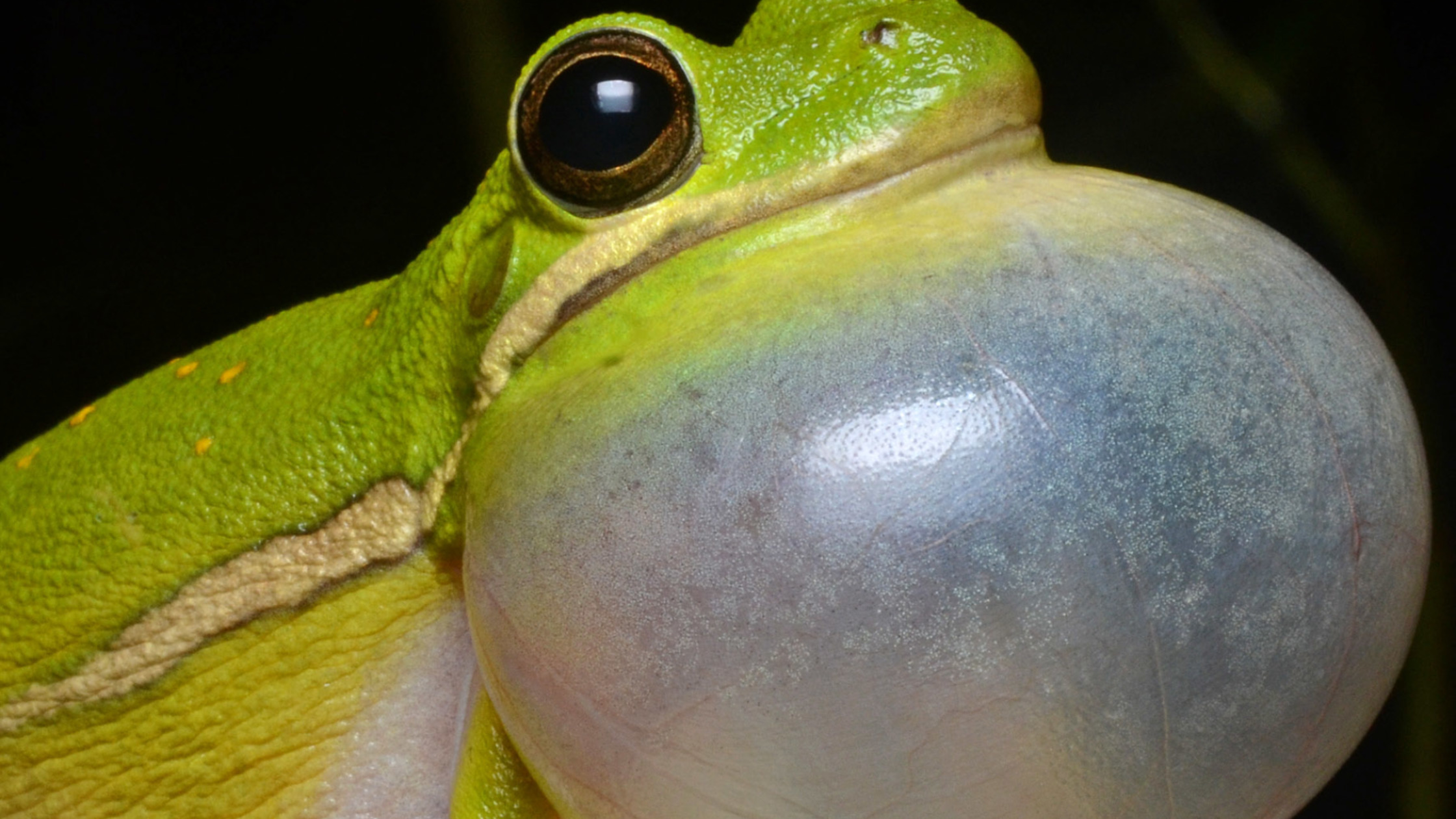Invasive Species Compete with Native Species for Room to Be Heard

Invasive species can wreak havoc on ecosystems. Most research has focused on how introduced species negatively impact biodiversity through predation, competition for food and shelter, and disease transmission. But invasives can harm native species in a less obvious way: edging them out of their acoustic space.
Acoustic space is the environment in which a sound is sent and received. It’s made up of many different parameters, including the time of day or year, pitch, loudness, duration, and call rate.
“Acoustic space is a limited resource, just like shelter or food,” says Jennifer Tennessen of Western Washington University. “Just as species compete for shelter or food, they compete for acoustic space.”
In established ecosystems, species divvy up the acoustic space so they can all be heard. For instance, birds tend to call at dusk and dawn, while frog choruses tend to be nighttime affairs.
![Hyla femoralis. Photo by Jeromi Hefner, USGS [Public domain], via Wikimedia Commons.](https://blogs.plos.org/ecology/files/2016/04/Hyla_femoralis-300x300.jpg)
Many species modify their calls in the presence of noise. In response to increased noise from human activities such as traffic, animals such as frogs have demonstrated the ability to compensate by altering the duration, loudness, pitch, or rate of their calls. But can the noise made by another animal also prompt such changes?
Acoustic Space Invaders
Tennessen, along with colleagues from Syracuse University and Pennsylvania State University, investigated the effect of acoustic invaders on native frog calls.
The Cuban treefrog (Osteopilus septentrionalis) is an invasive species that arrived in southern Florida by the 1930s and spread rapidly throughout the southeastern U.S. Its mating call has been described as a “grating squawk.”

Tennessen and colleagues conducted a field playback experiment with two native frog species, one whose calls are similar in pitch and timing to Cuban treefrogs (green treefrogs, Hyla cinerea) and one whose calls are dissimilar (pine woods treefrogs, Hyla femoralis).
The researchers found evidence that the invasive treefrogs compete acoustically with native treefrogs with similar calls: Green treefrogs modified their calls in response to playback of Cuban treefrog calls, but pine woods treefrogs did not. Green treefrogs made shorter, louder, and more frequent calls during Cuban treefrog call playback.
By modifying their calls, green treefrogs may be able to up the chances that potential mates can detect them amidst the noise. However, there may also be costs to changing their mating calls.
“Modifying calls could be bad for native frogs,” says Tennessen. “Certainly, altering the signal with which you attract mates could have some negative effects on mate attraction. But on the flip side, the benefits could outweigh the costs – if, by modifying their calls, green treefrogs are able to convey their calls more effectively so they are not masked by Cuban treefrog noise, it could be the lesser of two evils.”
Tennessen and her colleagues say more research on the effects of acoustic competition between native and invasive species is needed. At this early stage in the research, not much is known about the consequences of call modification. But these results suggest that competition for acoustic space is yet another way invasive species are putting pressure on native species.
